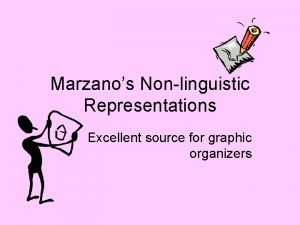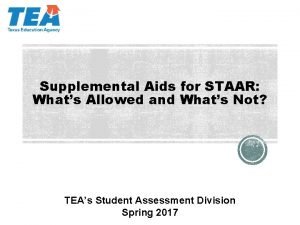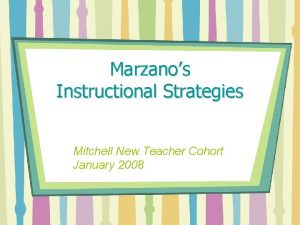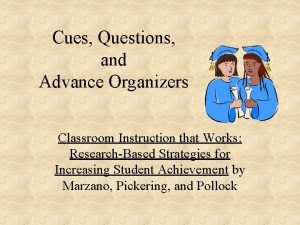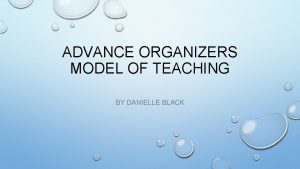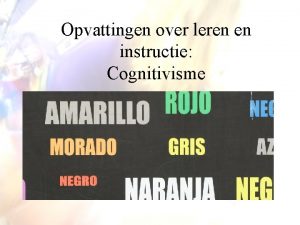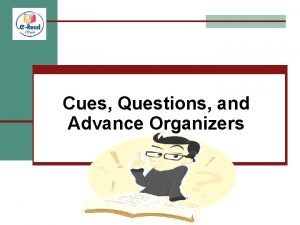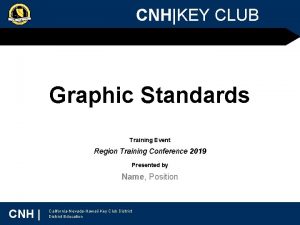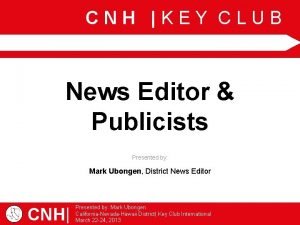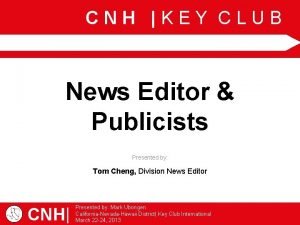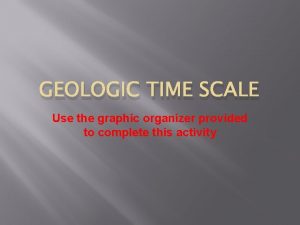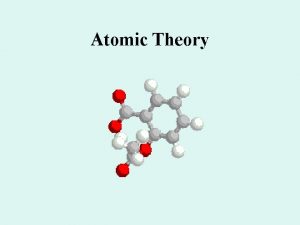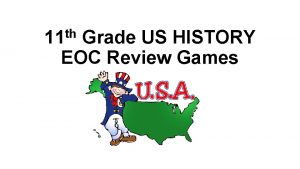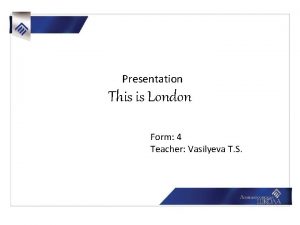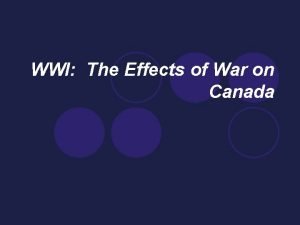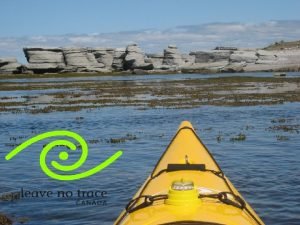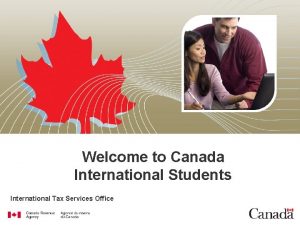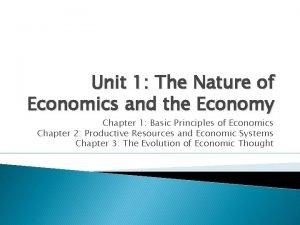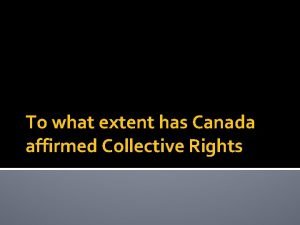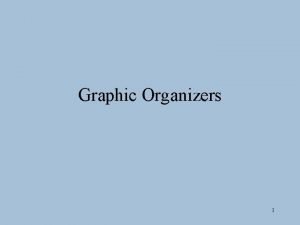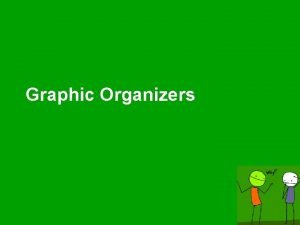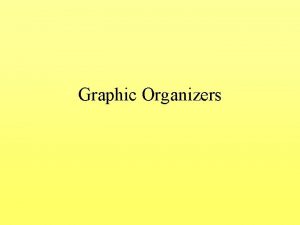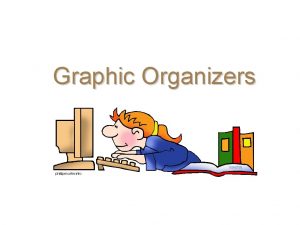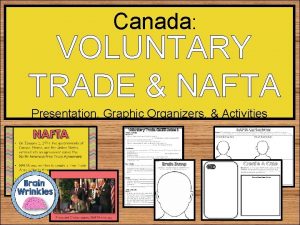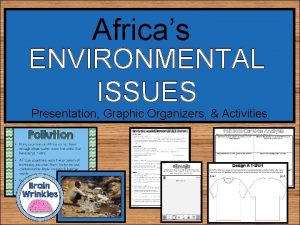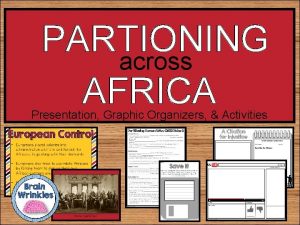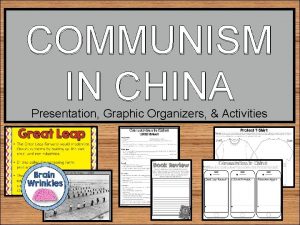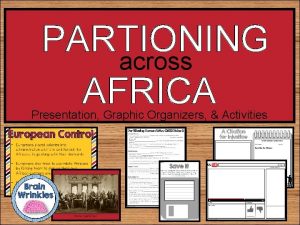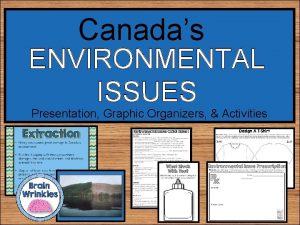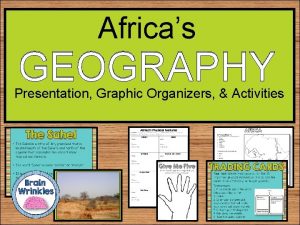History of CANADA Presentation Graphic Organizers Activities STANDARDS













































- Slides: 45

History of CANADA Presentation, Graphic Organizers, & Activities

STANDARDS: SS 6 H 4 The student will describe the impact of European contact on Canada. a. Describe the influence of the French and the English on the language and religion of Canada. b. Explain how Canada became an independent nation. © Brain Wrinkles

History of CANADA © Brain Wrinkles

First Nations • The First Nations are the native peoples of Canada. • They came from Asia over 12, 000 years ago. • They crossed the Bering Land Bridge that joined Russia to Alaska. • There were 12 tribes that made up the First Nations.

© Brain Wrinkles

Inuit • The Inuit are one of the First Nation tribes that still live in Canada today. • In 1999, Canada’s government gave the Inuit Nunavut Territory in northeast Canada.

© Brain Wrinkles

© Brain Wrinkles

Early Europeans • The first explorers to settle Canada were Norse invaders from the Scandinavian Peninsula. • In 1000 CE, they built a town on the northeast coast of Canada and established a trading relationship with the Inuit. • The Norse deserted the settlement for unknown reasons. • Europeans did not return to Canada until

© Brain Wrinkles

Newfoundland • In 1497, explorer John Cabot, sailed from England to Canada’s east coast. • Cabot claimed the area of land for England named it “Newfoundland”. • He was looking for a sea route to Asia, but instead found a land full of massive forests and an abundance of fish.

© Brain Wrinkles

France • In 1534, explorer Jacques Cartier sailed up the St. Lawrence River. • Cartier claimed the land for France named it “New France”.

© Brain Wrinkles

Fur Trade • In 1608, Samuel de Champlain built the first permanent French settlement in the New World (called Quebec). • Many settlers moved inland to trap animals because hats made of beaver fur were in high demand in Europe. • Fur trading with the Indians became a profitable business and the French quickly established more trading posts along the St. Lawrence River.

© Brain Wrinkles

© Brain Wrinkles

New France • The French called their territory “New France” and soon fur traders were joined by French farmers, merchants, and missionaries from the Catholic Church. • They brought with them French laws, traditions, and religion. • France wouldn’t let anyone move to New France who was not Catholic.

New France • New France grew to include much of eastern Canada and the central US. • It soon became an important part of the French empire, providing timber, fish, furs, and other valuable resources.

© Brain Wrinkles

British in Canada • England saw New France’s success and wanted their share of Canada’s rich natural resources. • British explorers moved west into Canada’s prairies and on to the foothills of the Rocky Mountains. • The British also colonized the region south of New France.

French & Indian War • Soon, both France and England wanted control of the resources in North America. • To protect their resources, the French built several military forts from Canada all the way down to the Gulf of Mexico. • Some of these forts were built on land claimed by Great Britain, and in 1754, a battle at one of the forts marked the beginning of the French & Indian War.

French & Indian War • The war involved Great Britain and the Iroquois Indians versus France and the Huron Indians. • France ultimately lost the war and Great Britain conquered New France in 1754. • New France officially came under British control when it was forced to sign the Treaty of Paris in 1763.

© Brain Wrinkles

American Revolution • In 1776, Americans gained independence from Great Britain. • This initiated a huge cultural change in Canada. • Americans who did not believe in independence left America and moved to Quebec (New France). • These people were called “Loyalists” because they were loyal to Great Britain. • As a result, Quebec began to have people who spoke English as well as French.

Quebec Act • Many Loyalists did not want to live among French-speaking Canadians. • Cultural differences between the English speakers & French speakers sparked many conflicts. • In 1774, the British government passed the Quebec Act.

Quebec Act • The British allowed the French to stay in Quebec, but continued to control the region. • The Quebec Act guaranteed the French the right to maintain their culture (language, religion, traditions).

Results • It gave French Canadians in Quebec the right to continue practicing the Catholic religion and allowed French civil law. • Loyalists were irritated with the new political & cultural power of the French. • They could not own land or have representation in Quebec’s government. • The differences among the two groups eventually led to a re-division of the country.

Division of Canada • In 1791, the British government drew new boundaries in Canada, dividing Quebec into two colonies. • Each colony was ruled by a British governor. • Most of the French people lived in “Lower Canada” and most of the British people lived in “Upper Canada”.

© Brain Wrinkles

War of 1812 • During this war, the French and British worked together against the United States, who tried to invade Canada. • The war resulted in a draw, but it defined the US-Canadian border and increased a sense of Canadian nationalism. • Both French Canadians and English Canadians joined to protect their land—they were more united than ever before.

© Brain Wrinkles

Unrest • French Canadians and English Canadians realized that they hated being under British rule. • They thought that Great Britain was too far away to understand their economic and political needs. • Colonists were unhappy with being governed by the British and began to rebel in 1837.

Province of Canada • Great Britain did not want to repeat what happened with the American Revolution. • Great Britain set up a government where the Canadian colonists governed themselves, except in matters of foreign trade, treaties, and defense. • In 1841, Upper & Lower Canada were united, establishing the “Province of Canada”.

British North America Act • In 1867, the British North America Act created the Dominion of Canada. • This meant that Canada was an independent, self-governing nation, but still part of the British empire. • The new country had four provinces: Quebec, Ontario, New Brunswick, and Nova Scotia.

© Brain Wrinkles

Expansion • The British North America Act allowed each region to sell goods more easily to one another. • This improved trade helped Canada’s economy. • Canada’s leaders desired to expand the new country from the Atlantic to the Pacific, so they bought land from the Hudson’s Bay Company.

Relocation • Government officials thought the purchase would be a simple process, but problems occurred with the native peoples. • Eventually the First Nations (Inuit) agreed to relocate to reservations in what is now called Nunavut. • In 1886, the Transcontinental Railroad was built on the Inuit’s former land.

© Brain Wrinkles

© Brain Wrinkles

© Brain Wrinkles

Growth • People could now easily travel across Canada from the Atlantic Ocean to the Pacific Ocean. • Other provinces and territories joined the union over the years as settlement moved west over the railroad system. • Today, the country consists of ten provinces and three territories.

© Brain Wrinkles

Cutting Ties • British influence on Canada’s foreign affairs was gradually reduced until 1931 when the Statute of Westminster was passed by the British Parliament. • This made Canada a free and equal member of the British Commonwealth of Nations. • Even though Canada had been an independent country since 1867, it finally had its legislative independence from Great Britain. • Today, Canada is a federation with a central government headed by a prime minister.

Influences • England France both settled large parts of Canada and have had a lasting impact on the country’s languages and religions. • Once the British took control of Canada, the English language spread throughout the country while the French language remained mainly in Quebec. • Today, two-thirds of Canadians speak English. • Canada’s two major religions are
 Tea blank graphic organizers
Tea blank graphic organizers Grammar and mechanics rules for staar 2021
Grammar and mechanics rules for staar 2021 Tea supplemental aids examples
Tea supplemental aids examples Hierarchical graphic organizer
Hierarchical graphic organizer Mcas accommodation codes
Mcas accommodation codes Generalization graphic organizer
Generalization graphic organizer Staar grammar and mechanics rules
Staar grammar and mechanics rules Marzano graphic organizers
Marzano graphic organizers Mcas accessibility and accommodations
Mcas accessibility and accommodations Graphic weight graphic novel definition
Graphic weight graphic novel definition Ghost graphic story graphic and wayfinding
Ghost graphic story graphic and wayfinding Skimming organizer
Skimming organizer Narrative advance organizer
Narrative advance organizer Expository advance organizers examples
Expository advance organizers examples Dear organizers
Dear organizers Register and signaling vocabulary
Register and signaling vocabulary Marzanos 9
Marzanos 9 Cues questions and advance organizers
Cues questions and advance organizers Problem solving videos
Problem solving videos Cnh graphic standards
Cnh graphic standards Cnh key club
Cnh key club Editor de cnh
Editor de cnh Operating activities vs investing activities
Operating activities vs investing activities Indoor vs outdoor sports
Indoor vs outdoor sports Support activities and primary activities
Support activities and primary activities Tertiary activities definition
Tertiary activities definition Customer defined service standards
Customer defined service standards Earth’s history and geologic time graphic organizer
Earth’s history and geologic time graphic organizer Atomic structure graphic organizer
Atomic structure graphic organizer Leisure time presentation
Leisure time presentation 11 grade us history eoc review
11 grade us history eoc review Fetal lie
Fetal lie 4 maneuvers of leopold
4 maneuvers of leopold Tower of london presentation
Tower of london presentation History also history physical
History also history physical Positive effects of ww1 on canada
Positive effects of ww1 on canada Leave no trace canada
Leave no trace canada What are the factors affecting the climate
What are the factors affecting the climate Welcome canada tax for international students
Welcome canada tax for international students The end and thank you images
The end and thank you images What are vegetation regions
What are vegetation regions Dli number of university canada west
Dli number of university canada west Canada economy type
Canada economy type Unicef canada statistics
Unicef canada statistics To what extent has canada affirmed collective rights
To what extent has canada affirmed collective rights Royal bank of canada
Royal bank of canada





